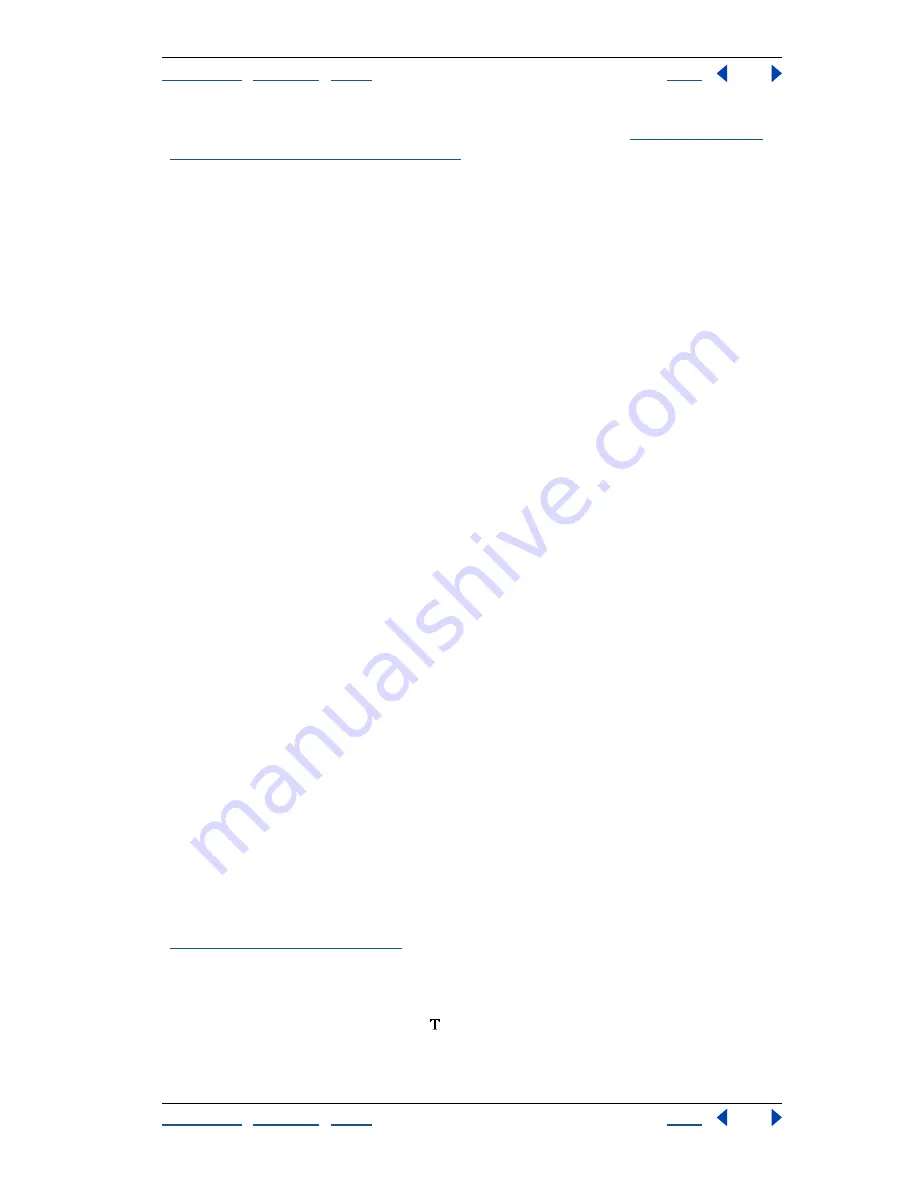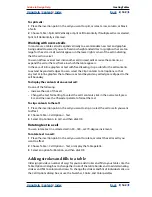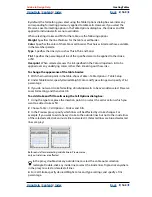
Using Help
|
Contents
|
Index
Back
172
Adobe InDesign Help
Creating Books, Tables of Contents, and Indexes
Using Help
|
Contents
|
Index
Back
172
For information on creating jump lines (such as “
Cont’d on p. 6
”), see
“Adding automatic
page numbers for story jumps” on page 55
.
Setting up hyperlink destinations
Before you create a hyperlink, it is sometimes necessary to set up the destination that the
hyperlink will jump to. InDesign supports three kinds of hyperlink destinations:
•
A document page. When you create a page destination, you can specify the zoom
setting of the page being jumped to.
•
A text anchor, which is any selected text or insertion-point location in a document.
•
A URL destination, which indicates the location of resources on the Internet, such as
a Web page, a movie, or a PDF file. The name of a URL destination must be a valid URL
address. When the reader clicks a URL hyperlink, the default browser launches with
the URL.
Note:
Hyperlink destinations do not appear in the Hyperlinks palette; they appear in the
Destination section of the New Hyperlink dialog box.
To set up a page destination:
1
Choose Window > Hyperlinks to display the Hyperlinks palette.
2
Choose New Hyperlink Destination in the Hyperlinks palette menu.
3
Choose Page in the Type pop-up menu.
4
Specify the page number you want to jump to, and type the name of the page desti-
nation. It is generally a good idea to add a descriptive name for the page, such as “Intro-
duction,” instead of “Page 3.” In this example, if you add or remove pages before page 3,
the destination name may no longer correspond to the page you wanted to link to.
5
For Zoom Setting, do one of the following to select the view state of the page being
jumped to, and then click OK:
•
Select Fixed to display the magnification level and page position that were in effect
when you created the link.
•
Select Fit View to display the visible portion of the current page as the destination.
•
Select Fit in Window to display the current page in the destination window.
•
Select Fit Width or Fit Height to display the width or height of the current page in the
destination window.
•
Select Fit Visible to display the page so that its text and graphics fit the width of the
window, which usually means that the margins are not displayed.
•
Select Inherit Zoom to display the destination window at the magnification level the
reader will use when the hyperlink is clicked.
You can create a hyperlink to an unnamed page without first creating a destination; see
“Creating hyperlinks” on page 173
.
To set up a text anchor destination:
1
Choose Window > Hyperlinks to display the Hyperlinks palette.
2
In the document, use the type tool
to place the insertion point, or select the range of
text, that you want to be the anchor. You cannot set up an anchor destination for text on a
master page.






























